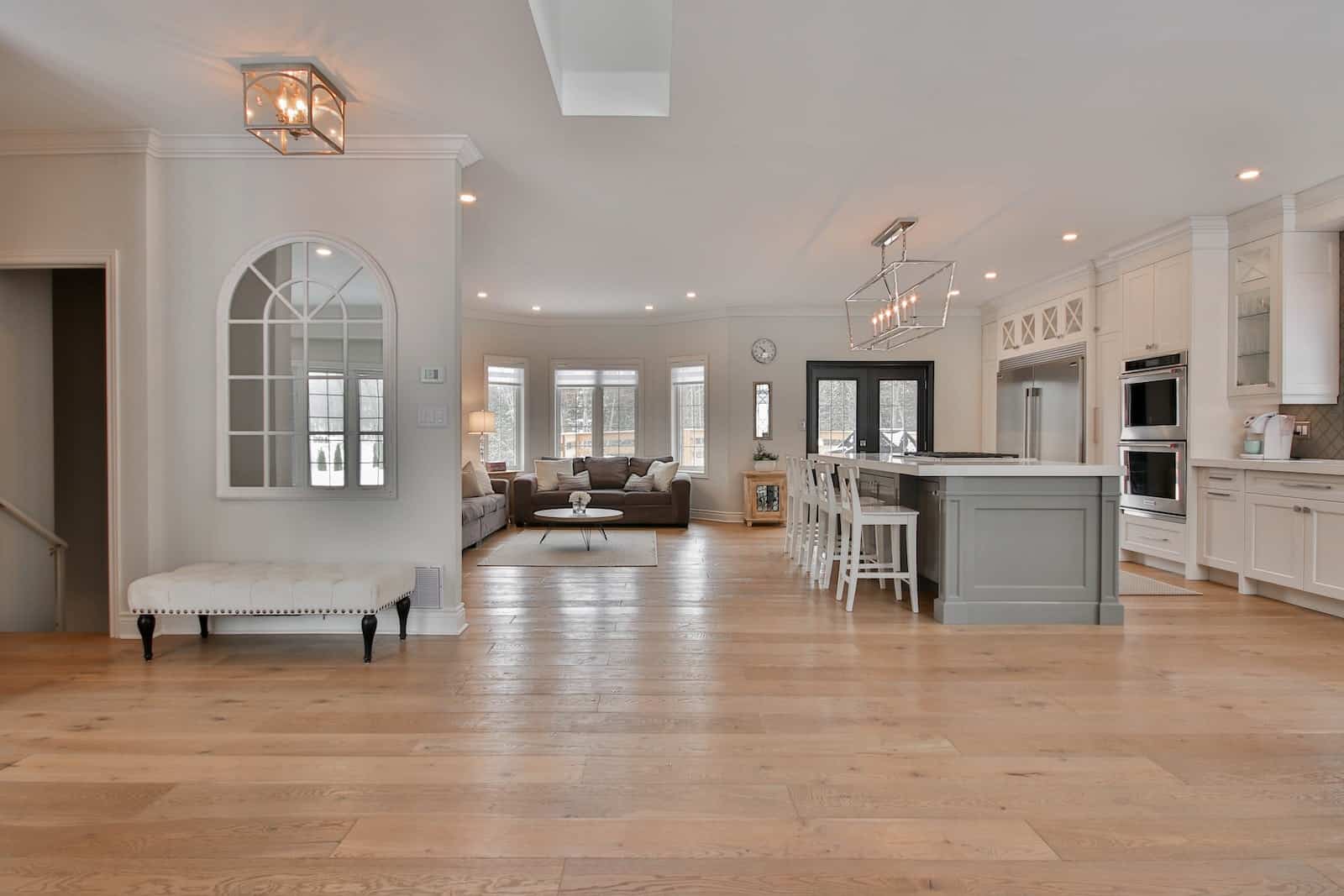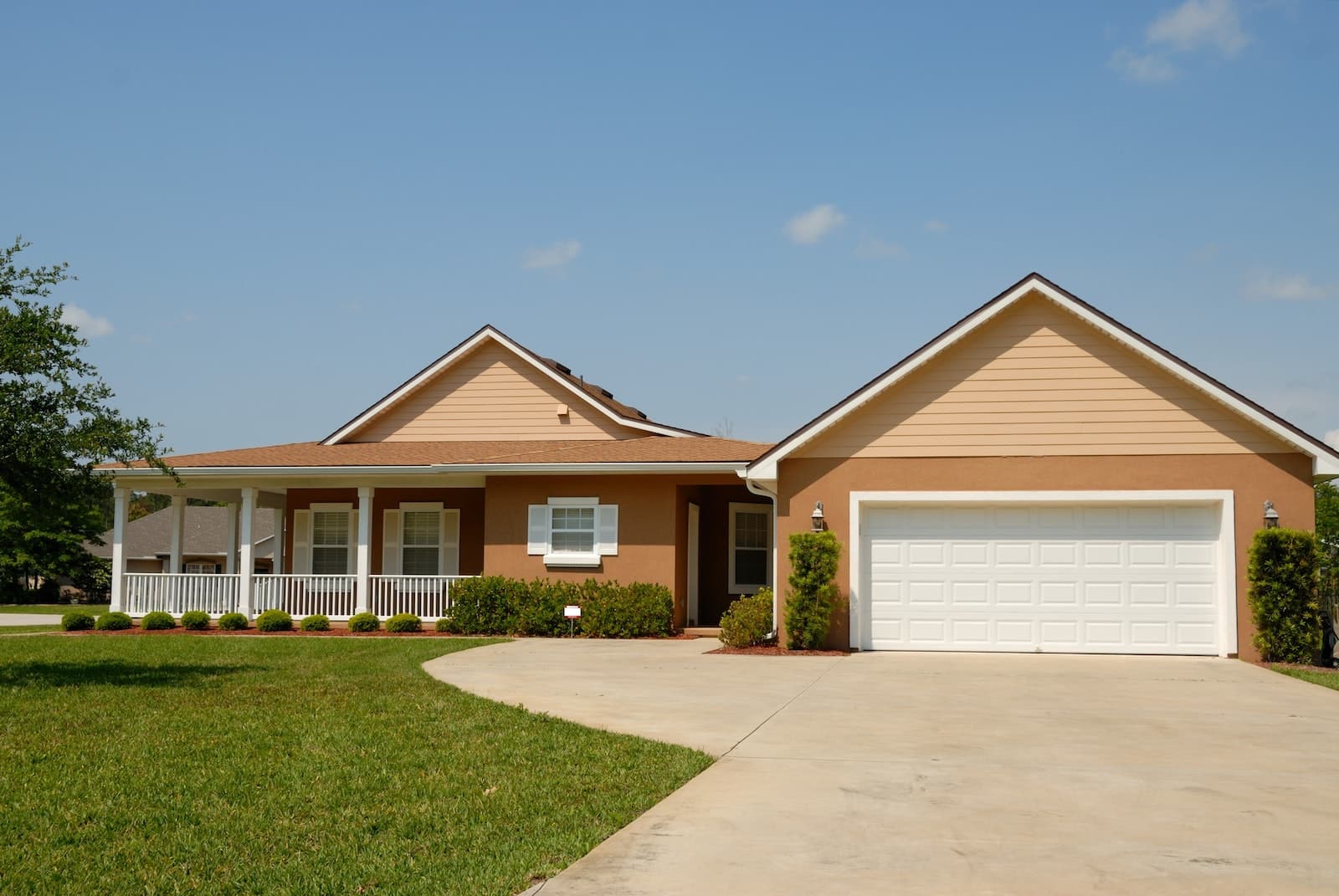I believe you’re looking for nice, sturdy flooring that won’t only complement your building, but also have a cordial relationship with nature. Well, look no further; you have arrived.
In the past, the term eco-friendly portrayed bland materials. Fortunately, there is a whole new level of difference today.
This is because the qualities of these materials have been recognized worldwide.
More so, designers, in the bid to create huge clientele, have stepped up their game, creating exquisite designs, and patterns, leaving the world with lots of choices to choose from.
Where are these floorings, you ask? Below is a listicle of some of the popular eco-friendly flooring in the world, alongside their pros and cons.
1. Cork
This is one of the newer eco-friendly flooring materials. Over the years, it has been used for capping wine bottles, but it has been tested and proven to be a great flooring material.
Gotten from the bark of the cork oak tree, these floorings are finished in varieties of stains and paints to suit any design style or color scheme.
These eco-friendly floorings can last between 10-30 years depending on their quality.
Pros
- They are insulators
- They are biodegradable, sustainable, and eco-friendly
- Super quiet and sound dampening
- They contain Suberin, which is a natural fire retardant
- They are hypoallergenic and antimicrobial
Cons
- They fade from the action of ultraviolet rays
- Engineered corks are not eco-friendly
- It absorbs water which damages it.
- Both sharp and blunt objects can scratch or dent cork floors.
2. Bamboo
This popular flooring shares similar features as hardwood. Made from natural vegetation, these lights grasses can be made available in various hues suitable for any décor or setting.
Pros
- They are durable
- They have clean and contemporary designs suitable for modern design clientele.
- When properly finished, these eco-friendly flooring can be easily cleaned with a mop and mild soap.
- Depending on the plank’s thickness, this flooring can be refinished.
- Laminated bamboo flooring that comes with multiple layers is DIY friendly.
Cons
- Cheaper bamboo flooring is prone to scratches and dings.
- Easily absorbs water which damages the wood due to excessive humidity.
- Bamboo has a contemporary look that doesn’t go with all decorsdécors.
- There is an availability of just a few tonal shades
3. Linoleum
This takes on the resemblance of vinyl flooring, but it is in no way as harmful as it looks. Linoleum is made from a mess of tree resins, linseed oil, cork dust, wood flour, ground limestone, and pigments.
As designers and architects began asking for this material, it emerged with varieties of vibrant colors and a new sealer that protects it from stains.
Pros
- It is durable, with a life span of up to 25 years. With proper maintenance, it can last up to 40 years or more.
- It is renewable and biodegradable
- It does not release harmful VOCs
- It requires little maintenance. Occasionally, damp mopping and sweeping would suffice.
Cons
- Resilient linoleum can get scratched or dented by furniture legs and heels.
- Linoleum turns yellowish or dark when exposed to UV rays. This process is called “ambering.”
- Linoleum can absorb moisture, which is why it isn’t suitable for installation in laundry rooms, bathrooms, or other areas with high humidity.
- Linoleum flooring is slippery after waxing.
4. Glass tiles
Many of these glass tiles are recycled beer and wine bottles made into beautiful glass tiles. They are suitable for floors as well as kitchen and bathroom walls. Glass comes in a vast array of patterns, colors, and finishes suitable for any decor.
Pros
- They are translucent in endless arrays of colors, making them one of the most beautiful eco-friendly flooring options.
- Splashes and grime can be easily wiped off with just a little soapy water or an all-purpose cleaner.
- Glass tiles are impervious to water, unlike other flooring materials.
- They are mostly recycled material. Even brand-new ones are recyclable.
Cons
- Glass tiles are extremely pricey.
- Professional installation is highly required.
- Due to its translucency, the adhesives used are most times visible.
5. Concrete
Concrete flooring might be seen as a typical slab used as subflooring, but when tinted and polished to the homeowner’s style, there wouldn’t be a need for traditional flooring.
Pros
- Concrete flooring is durable
- Concrete floors are designed to withstand heavy furniture.
- These eco-friendly flooring have high thermal used to reduce the energy demand for thermal comfort.
- They can be constructed quickly.
- They are damp and fire-resistant.
- They can be easily maintained
Cons
- Defects on concrete floors are difficult to rectify. Patchworks cannot give a satisfactory outcome.
- It has little to no insulation against heat and sound.
6. Wool carpet
This type of eco-friendly flooring has long been the go-to material for most homes. It is comfortable to sit on, soft to step on and comes in numerous patterns and colors. However, not all carpets are eco-friendly. This wool carpet can stay for centuries and can be passed down from generation to generation.
Pros
- They are soft and comfy
- Wools are natural materials that require no chemical
- Very suitable for indoor flooring.
- They can absorb up to 30% of their weight without feeling damp.
- They are resistant to crushing and compacting
- They are natural dirt repellent
- They maintain their color over time
- They are flame retardant
Cons
- Over time, they become a home for moths and carpet beetle larvae. However, this can be treated with insecticide.
- Alkaline substances present in some detergents can harm wool.
- They are on the costly side.
7. P.E.T Berber Carpet
This is another eco-friendly flooring option to consider. It is made from recycled plastic bottles and poses a minuscule impact on the environment. For every plastic bottle used to make this carpet, there is one less lying on our landfills.
Pros
- It can handle heavy foot traffic easily
- Flecked Berber flooring conceals dirt well
- It is affordable
- It comes in varied fiber choices
- It is easy to maintain
Cons
- Difficult installation
- Difficult to repair
- It is not as soft as other forms of carpet.
8. Rubber
Rubber flooring is created from recycled tires usually found at neighborhood playgrounds or the local gym. It has over time found its way into our bathrooms, kitchens, and sunrooms. It has also brought with it beautiful, versatile, long-lasting options to choose from.
Pros
- It is resistant to heavy foot traffic and tough workouts.
- It comes in various styles
- It is easy to install due to its lightweight and interlocking design.
- It requires no adhesives
- Damaged parts can be easily replaced
- It is easy to uninstall and reuse in a different location.
Cons
- It is time-consuming when installed in a larger space.
- Loose seams can let water sip into the subfloor.
- Smooth rubber flooring gets slippery when wet
- It exudes a rubbery smell a couple of months after installation.
9. Leather
Derived from cowhide and with its thickness, this eco-friendly flooring has weaved its way into bedrooms, closets, kitchens, and other places that require little foot traffic. The perks of this type of flooring are that even at old age, its worn-out parts would develop a personality of their own, giving it an artistic feel.
Pro
- It gives out an aesthetic appeal
- The leather material comes in assorted styles and designs
- It is durable
- It enhances the acoustics of a place by absorbing sound energy.
- It is easy to maintain
Cons
- Highly sensitive to humidity, sunshine, and heat
- Untreated leather flooring is susceptible to stains
- It is highly responsive to wear
10. Reclaimed hardwood
Hardwood might not be entirely considered eco-friendly due to deforestation concerns, but a type of it called reclaimed hardwood can still be an option. Reclaimed hardwood is trees chopped down ages ago, salvaged, and used for making flooring with vintage decor.
Another type of hardwood is the FSC (Forest Stewardship Council) certified hardwood. This is an organization responsible for maintaining environmental standards.
Pros
- It can be converted from one form of wood to another.
- It has a unique appearance
- It is durable and sturdy
Cons
- The prices of this type of flooring are unstable
- It has no standard quality
- There are limited supplies of these flooring materials
Conclusion
There you have it! A list of eco-friendly flooring just for you. With a bit of creativity and evolving technology, eco-friendly flooring does not have to exist at the expense of style. You can have both.









